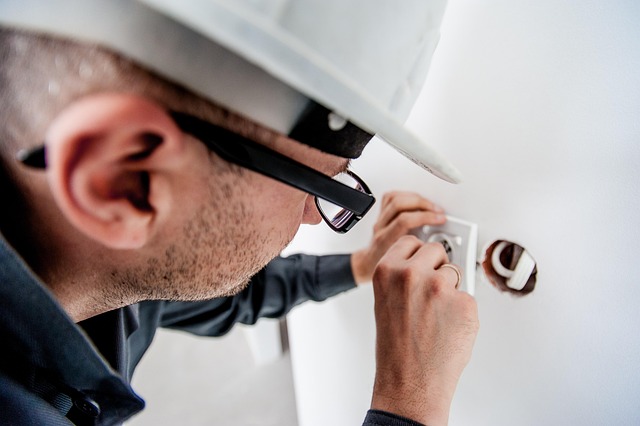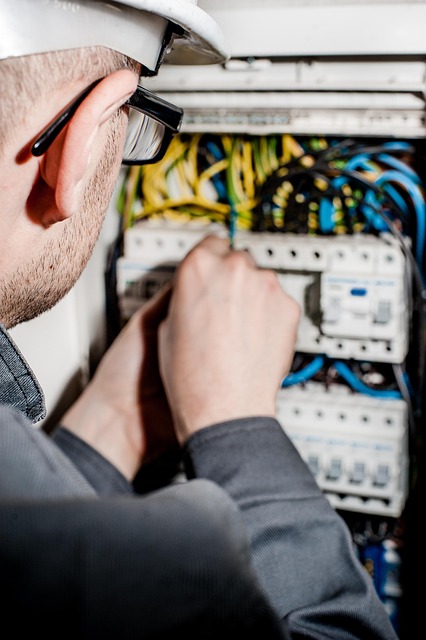Understanding common circuit faults like loose connections and outdated wiring is vital for electricians to prevent hazards. Regular inspections catch potential issues before escalation. This guide teaches non-electricians to fix faulty circuits and outlets safely using simple tools, empowering confidence in basic electrical repairs without professional help.
Need help with faulty circuits or electrical outlets? This comprehensive guide is your go-to resource. As a homeowner, knowing how to identify and repair common circuit faults can save you time and money—and potentially prevent dangerous electrical fires. Learn the ins and outs of troubleshooting and repairing circuits like an electrician, ensuring a safe and reliable electrical system in your home.
Understanding Common Circuit Faults and Outlets

Understanding common circuit faults is key to effective troubleshooting by an electrician. Issues like loose connections, outdated wiring, or faulty components within outlets and switches can lead to a range of problems, from flickering lights to electrical shocks. Identifying these issues early on prevents more serious hazards such as fires or power outages.
Regular inspection and maintenance performed by a qualified electrician play a vital role in catching potential problems before they escalate. By staying proactive with circuit diagnostics and outlet repairs, homeowners can ensure their safety while saving money on costly repairs or replacement of entire systems.
Step-by-Step Guide to Faulty Circuit Repairs

Facing a faulty circuit or electrical outlet? Don’t panic! Here’s a straightforward, step-by-step guide to help you get it fixed like a pro, even if you’re not an electrician.
1. Safety First: Turn off the power at your main electrical panel. Locate the circuit breaker responsible for the faulty outlet and flip it to ‘Off’. Use a voltage tester to confirm that there’s no electricity flowing to the outlet before proceeding.
2. Inspect the Outlet: Examine the outlet for any signs of damage, like burned marks or frayed wires. Check if the outlet is loose and securely attached to the circuit board within the wall box.
3. Identify the Problem: Determine what’s causing the fault. Common issues include a blown fuse, a tripped circuit breaker, or a faulty outlet. A simple test with a voltage tester can help identify the problem.
4. Replace If Necessary: If you find a blown fuse or tripped breaker, replace them with new ones of the same amperage rating. For a faulty outlet, unscrew and remove the outlet from the wall box, then replace it with a new one, ensuring proper connections.
5. Test and Verify: After making the necessary repairs, re-flip the circuit breaker or replace the fuse and test the outlet with a voltage tester to ensure it’s functioning properly.
Whether it’s a flickering light or a tripped circuit breaker, addressing faulty circuits and electrical outlets is crucial for both safety and the longevity of your home’s electrical system. By understanding common issues and following a structured approach to repairs, you can effectively troubleshoot and fix problems yourself, saving time and money. Remember, if the fault seems complex or you’re unsure, it’s always best to consult a professional electrician for expert assistance.
